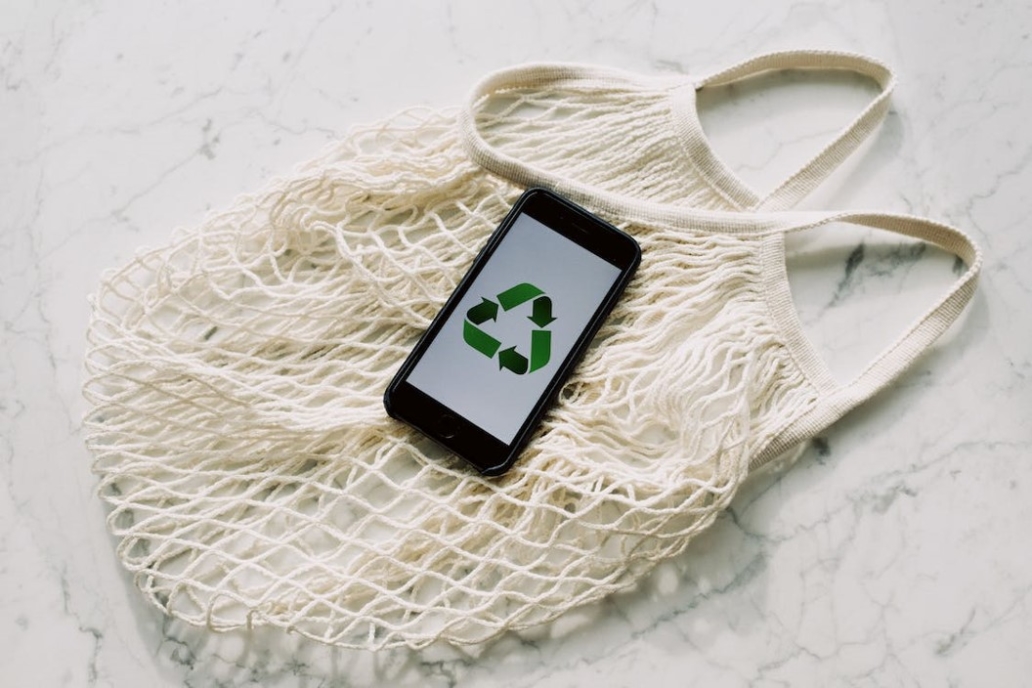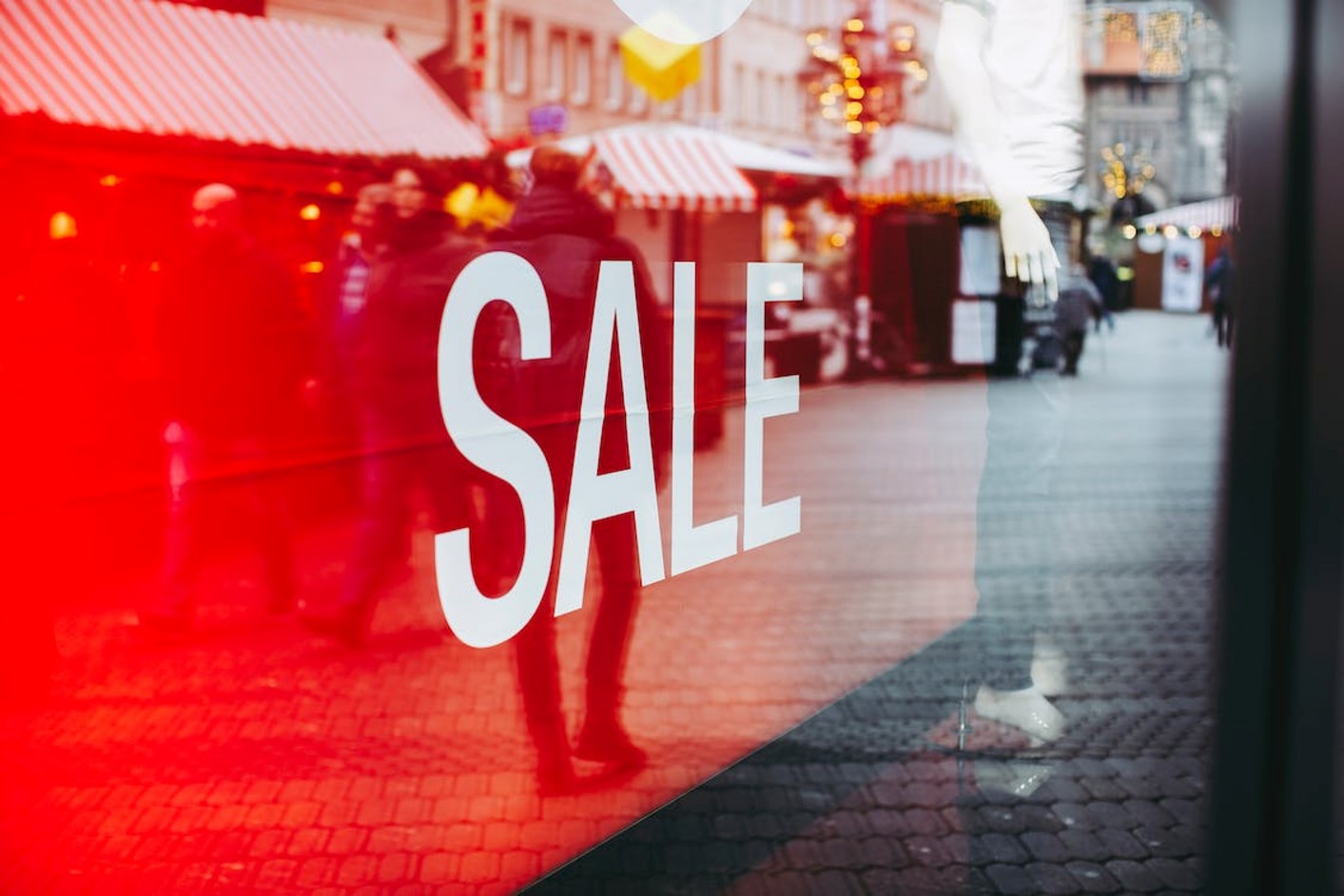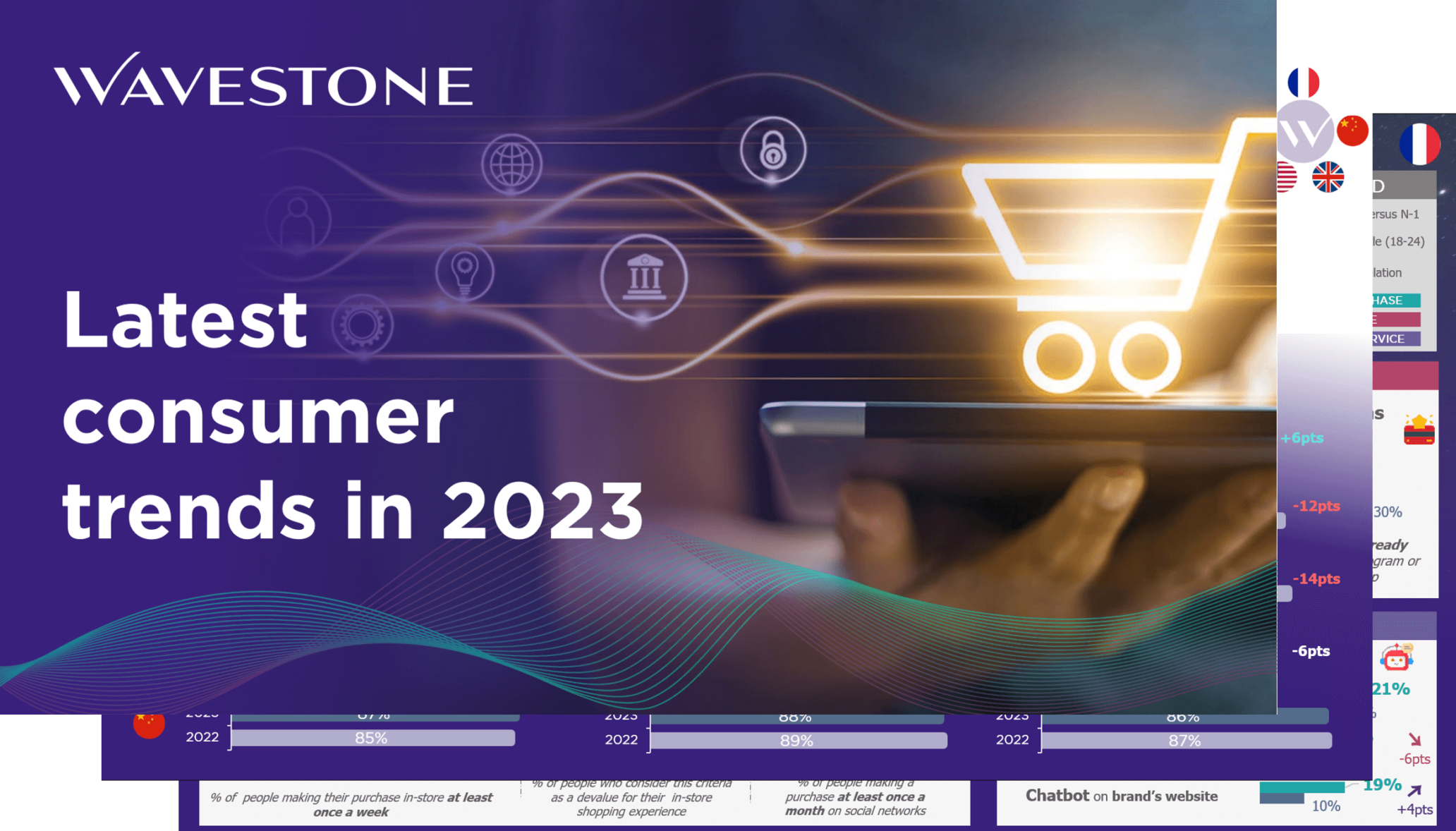A 6th edition of the new consumer trends barometer
To guide decision-makers around the world, Wavestone has been publishing since 2018, documented insights on consumer trends’ perpetual changes in France. In 2022, Wavestone decided to complete its study by including 4 new countries: The United States, China, United Kingdom and Germany.
Methodology and approach
In each country, the study is based on a quantitative survey conducted in November and December 2022 with a panel of more than 1,000 consumers representative of the population for each country, who answered about 50 questions covering five major themes:
- Information and purchase channels
- Consumer criteria
- New modes of consumption
- Purchase experience
- And services provided by the brand
Lastly, thanks to our marketing, distribution, customer relationship and digital experts, we were able to enhance these answers using their expertise.
8 key trends and main statements from the latest consumer trend study
As the cost of living keeps rising, 4 out of 5 French people intend to reduce their spending behaviors on all areas. Overall, 60 to 70% of all respondents plan to consume less.
56% of European consumers (France, Germany, The UK) are not willing to spend more to consume sustainable goods and services. This disposition is among all socioeconomic statuses.
Majority of respondents (all countries) are ready to wait longer for their products’ delivery in exchange of a cheaper cost (86%) or an eco-friendlier process for the same cost (78%).
Among the entire population surveyed, second-hand purchases are often made because of budget constraints (51%), while sales are mainly made to gain more space (65%).
Among the brands committed to societal issues, consumers say that they prefer those involved in respecting animal welfare. This is notably the case for 62% of the French (1st cause).
Soon to be outdated because of other information channels, French people remain fond of in-store customer care provided by salesperson (44%). While in other countries overseas, they are seen as less relevant (18%).
In all the countries surveyed, consumers rank unsuitable promotions as the number one pain point of the shopping experience, apart from stock shortages and regardless of the chosen channel (online / offline).
Seniors aged 65 and over represent 27% of luxury goods’ consumers in France (1st age group). They spend an average of €900 per year on luxury goods, compared to €3,300 in China and €4,400 in the United States.
Inflation: changes in spending categories per household in 2023
Check out our interactive visual Chart on the evolution of consumer spending items in relation to inflation.
We deeply thank Raphael De Croisoeuil, Hajare Alaoui, Romain Clémençon, Alessia Corsi, Sophie De Champs, Morane Gour, Mika Ishikawa, Louis Lejeune, Jiafeng Li and Annabelle Ndjadi for their contribution.
For a more detailed overview
Contact one of our experts
Our previous barometers
Find the 2 previous editions of the new consumer trends barometer.













